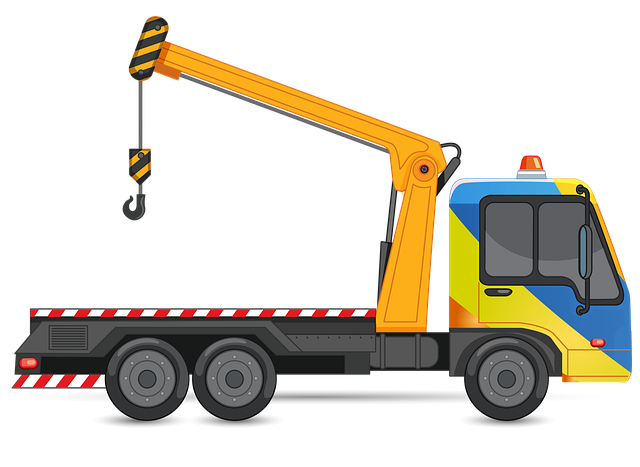Managing risks for companies with large vehicle fleets is crucial due to higher injury rates and increased workers comp claims among fleet employees. Identifying liabilities, such as vehicle accidents and equipment-related injuries, involves assessing everyday tasks and environments. Effective strategies include robust safety programs, regular training (like defensive driving), tailored worker's compensation (workers comp) policies, clear communication channels, and advanced risk management techniques to protect fleet employees, ensure compliance with regulations, and minimize financial impacts.
In the dynamic world of transportation, managing fleet-specific workplace risks is paramount to ensuring worker safety and mitigating legal liabilities. This comprehensive guide delves into the unique challenges faced by fleet employees, exploring how these risks impact workers’ compensation claims. We’ll dissect potential hazards, offer risk mitigation strategies, and highlight best practices for fostering a culture of safety within your fleet. By understanding and addressing these issues, businesses can protect their most valuable assets—their employees—while reducing legal exposure related to workers comp fleet employees.
Understanding Fleet-Specific Workplace Risks and Their Impact on Workers Comp

In the realm of workforce management, especially for companies with a significant fleet of vehicles, understanding and mitigating workplace risks is paramount. Fleet-specific risks encompass a unique set of challenges that impact the safety and well-being of workers comp claims for these employees. From driving-related incidents to maintenance hazards, these risks are inherent in the daily operations of transporting goods or people.
The impact on workers comp is substantial as fleet employees often face higher injury rates compared to their non-transporting counterparts. This results in increased claims, which can strain insurance premiums and negatively affect a company’s overall financial health. Recognizing and addressing these risks through comprehensive safety programs, regular training, and robust risk management strategies are essential steps toward minimizing workers comp liabilities for fleet employees.
Identifying Liabilities: A Deep Dive into Potential Hazards for Fleet Employees

Identifying liabilities is a critical step in mitigating risks for fleet-specific workplace hazards. When it comes to fleet employees, potential dangers can arise from various factors unique to their work environment and activities. These include vehicle accidents, loading and unloading incidents, and on-the-job injuries related to equipment operation or maintenance. Workers’ compensation claims are a significant concern, as these accidents can result in substantial financial burdens for employers due to medical expenses, lost wages, and legal fees.
A deep dive into these hazards involves assessing everyday tasks and environments. For instance, fleet employees may face risks while driving, such as fatigue, weather conditions, or poorly maintained roads. Additionally, working around heavy machinery, loading docks, or cargo can pose physical dangers. Identifying these liabilities is the first step towards implementing safety protocols, training programs, and risk management strategies to protect fleet employees and ensure compliance with workers’ compensation regulations.
Risk Mitigation Strategies: Protecting Your Fleet and Workers through Comprehensive Programs

To mitigate risks associated with fleet-specific workplace hazards, companies should implement comprehensive programs tailored to protect both fleet employees and vehicles. One crucial strategy involves regular maintenance checks to ensure vehicles are in optimal condition, reducing the likelihood of breakdowns or accidents on the road. Additionally, providing workers comp coverage for fleet employees is essential to safeguard against potential injuries or health issues related to their work.
Training programs can play a significant role in risk mitigation. Equipping drivers with defensive driving techniques and safety awareness courses can minimize accidents caused by human error. Furthermore, implementing strict adherence to traffic rules and regulations helps ensure the safety of both fleet employees and other road users. Regular fleet management software updates enable real-time tracking and monitoring, allowing for prompt incident response and improved overall fleet safety.
Best Practices for Managing and Communicating Fleet Safety to Reduce Legal Exposure

Effective management and communication of fleet safety are crucial in reducing legal exposure for businesses with a fleet of vehicles. One of the best practices is to implement comprehensive training programs for drivers, covering essential safety protocols tailored to their specific roles. Regular updates on changing regulations related to workers comp fleet employees should be part of this training, ensuring compliance and minimizing risks.
Additionally, clear and consistent communication channels should be established to share safety information with all fleet employees. This includes regular meetings, digital platforms for instant updates, and accessible resources that outline expectations, policies, and procedures. By fostering an open dialogue, fleet managers can address concerns promptly and encourage workers comp fleet employees to actively participate in maintaining a safe working environment.
In addressing liabilities related to fleet-specific workplace risks, a proactive approach is key. By understanding the unique hazards faced by fleet employees and implementing effective risk mitigation strategies, companies can significantly reduce their legal exposure and protect both their workforce and operations. Regular communication of safety best practices among fleet workers is essential for fostering a culture of safety, ultimately enhancing overall worker compensation outcomes.
